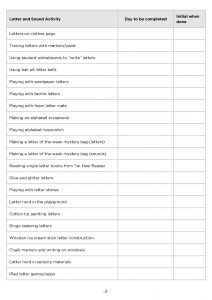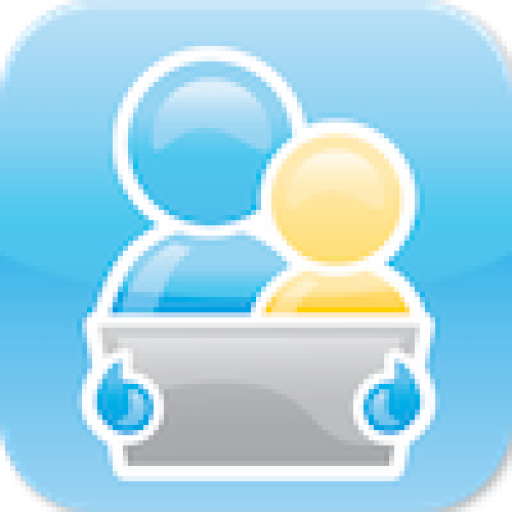Many of us work with students who are just starting on their journey of learning the alphabet – or who are at different stages in learning the alphabet.


Erickson and Koppenhaver (2019) identified 10 success factors that are important to be included in literacy instruction with students with significant disabilities. Number 3 on this list is “repetition with variety” – where we understand that students need a certain amount of repetition to learn a skill BUT that we need to make sure there is variety in the way we teach it so that we keep their engagement – and because they are more engaged they learn more!
One of the things I often say in workshops is that we need to make sure we have a variety of activities available in teaching the alphabet – especially because some of our students may be learning the alphabet for quite some time. I am, of course, referring to repetition with variety – but I specifically talk about it when teaching the alphabet because I see a lot of people getting stuck using the same alphabet activities again and again.
Halfway through this year I was in a classroom at Bullimbal School and I saw a great resource in action that I believe will help a lot of other people make sure they have repetition with variety in their classroom for alphabet activities.
The teacher, Emma Kirby, had a class who were nearly all early alphabet learners, many of them knowing fewer than 5 letters in the alphabet at the beginning of the year. The students were also mostly in their first or second year at school.
Emma had her class setup to rotate around different stations throughout the day. Her amazing education assistants often ran a station or activity based on Emma’s planning. To facilitate this, Emma had typed up a list of all the different alphabet activities she had access to in her classroom. She then used this list to let the whole classroom team know which activities are to be done on which day.

There are many things I love about this list. Firstly, it helps enormously with repetition with variety. Emma has a list at her fingertips of everything that her class has the resources to do – which helps her with repetition with variety. When she is sitting down to plan for the term ahead she has a list already at her fingertips that reminds her of all the options instead of getting stuck on a similar group. Second – it is a very clever way for her to reduce her planning time as it takes just minutes for her to complete these for the whole term. Third – her planning is clear to the rest of her team. This means that they can be more independent – or if things go pear shaped in the classroom and Emma is occupied with something else, the team has something that they can follow through on.
Due to the fact that I think this is such a great idea, I asked Emma’s permission, to not only share it but to expand on it. So, I have taken her list and added a bunch of explanation cards that contain extra information for the team who are implementing the activities. I’ve also made up some extra resources to help with some of the activities. So here goes:
Letters and Sounds Activities checklist
Firstly, I created a checklist very similar to Emma’s original. You can see this and download it below. You can use this whether you are doing a letter of the day as suggested by Erickson and Koppenhaver (2019) and looking for extra activities – or whether you are using 2 to 6 letters of the week.



Letters and Sounds Activities Cards
For each item on the list above (46 of them) I’ve made an explanatory card with extra information. For my own resource, I’ve printed and laminated these and put them together with a split ring in the corner so that I can leaf through them and find the right one. I’ve also made sure they are in the same order as the list above.

Some items need some additional resources. Some of these are items I have made for you to print and use – others are items you will need to download from elsewhere or purchase.
Additional Resources to Download
The extra resources I’ve made are below. These are referred to on one or more of the letters and sounds activity cards. Some are made to be printed and laminated and re-used, while some are made to be printed and decorated!
Additional Resources from other sources!
- Letter jigsaw puzzles are available from This Reading Mama
- The beads I use for Letter Bracelets are from Modern Teaching Aids or Lakeshore
- The Magnetic Letter tiles are from Modern Teaching Aids or Lakeshore
- The square and round letter tiles I have are no longer available from the original suppliers but there are many options available online – just search for them.
- The Unifix letter cubes, Coko alphabet bricks and alphabet building blocks are available from a range of suppliers. The Duplo with letters were homemade by writing letters onto Duplo blocks.
- The transparent or translucent letters are also available from a range of suppliers. Try and order a larger size – the mini ones are very mini!
- The playdough letter stampers I use are from Modern Teaching Aids or Lakeshore. There are lots of others available – but I like these are they are accessible to a lot of different students.
- Ball Pit Letter balls are homemade by writing letters onto ball pit balls.
- Sandpaper letters are available in lots of different varieties – again do an internet search and you’ll even find instructions to make your own.
- The tactile letters with Braille are from Modern Teaching Aids and the liquid and bead filled letters are from Amazon – these last are a favourite of mine because they’ve been really durable and so many students love them.
- Foam letter mats are also available in lots of different places.
- Letter stones can be purchased pre-made or you can make your own.
- Glow in the Dark Letters are also available from a range of places. You can buy 3D ones or sticker versions, that I stick onto black card.
- Alphabet paint stampers are available in many places – I saw them in my local supermarket just the other day. The cheaper ones, like the ones on the card, often don’t last very long. Recently I invested in some longer last ones that are also easier for students to grip. These are from Modern Teaching Aids.
- Instructions for how to make sensory bags are from Messy Little Monster
- Alphabet cookie cutters are also available from a range of places. Again, try and buy slightly larger ones as the mini ones can be very mini!
- Kinetic Sand and EverFoam are also available lots of different places. EverFoam is one of my current addictions – so if you live near me you might not be able to buy it 😉
- For letter sorts, I’ve provided some sheets you can print. However, many of the teachers I work with make up small bags with a single letter in each bag – there’s a photo on the card. These bags contain a mix of magnets, plastic and wooden letters as these are often more durable and more interesting for the students!
And please enjoy working with letters and sounds with repetition with variety!!
Reference
Erickson, K., & Koppenhaver, D. (2019). Comprehensive literacy for all: Teaching students with significant disabilities to read and write. Baltimore, MD: Brookes.


Petra Dillmann, Windhoek, Namibia
jane